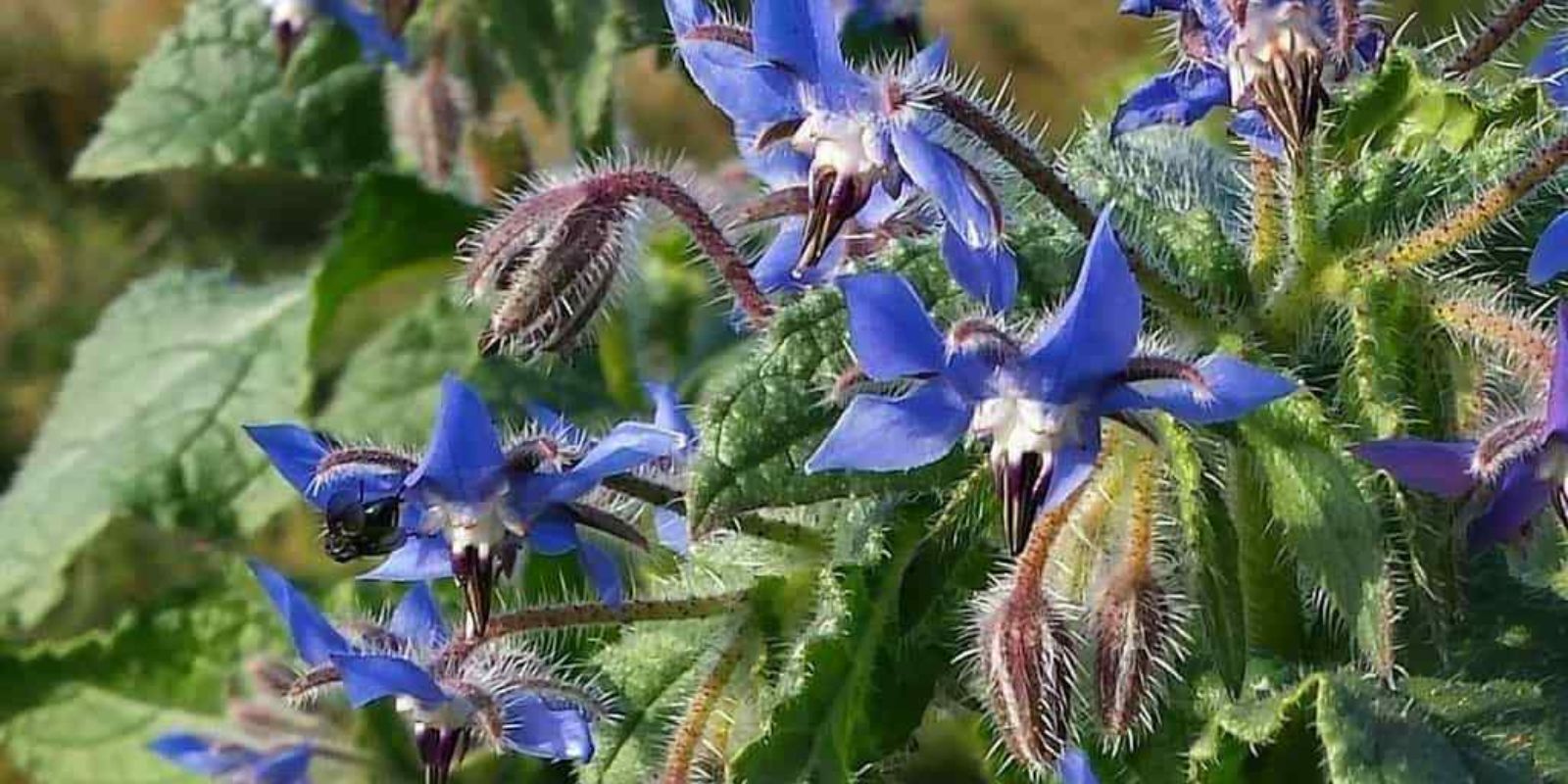Borage, or Borago officinalis, is an often-overlooked gem in the gardening world. With its stunning star-shaped blue flowers and a flavor reminiscent of cucumbers, borage is not only a beautiful addition to your garden but also a versatile herb with countless benefits. From attracting pollinators to improving soil health and offering medicinal properties, borage is a plant that every gardener should consider.
In this article, we’ll delve into the wonders of borage, exploring how to grow it, its incredible benefits, and how you can use it in your garden and daily life.
What Makes Borage Special?
Borage is a hardy annual herb native to the Mediterranean region but has become a favorite among gardeners worldwide. Its unique combination of beauty, functionality, and low maintenance makes it a go-to plant for gardens of all sizes. Here are some reasons why borage is special:
- Pollinator Magnet: Borage blooms are rich in nectar and attract bees, butterflies, and other beneficial insects, boosting your garden’s ecosystem.
- Soil Enricher: It acts as a green manure, improving soil fertility when decomposed.
- Culinary Delight: Its leaves and flowers add a refreshing flavor to salads, teas, and desserts.
- Medicinal Benefits: Borage is known for its anti-inflammatory and skin-soothing properties, making it a valuable herb in traditional medicine.
How to Grow Borage
Growing borage is straightforward, making it ideal for both beginner and experienced gardeners. Follow these steps to cultivate this versatile herb in your garden:
1. Selecting the Right Location
Borage thrives in full sun but can tolerate partial shade. Choose a spot that receives at least 4-6 hours of sunlight daily. Ensure the area has well-draining soil, as borage doesn’t like sitting in water.
2. Preparing the Soil
While borage is not picky about soil, it grows best in nutrient-rich, loamy soil. Add organic compost or aged manure to improve fertility and drainage.
3. Planting the Seeds
- Sow borage seeds directly into the ground after the last frost.
- Plant the seeds about ¼ inch deep and space them 12 inches apart to allow for growth.
- If starting indoors, sow seeds in biodegradable pots and transplant seedlings once they are 4-6 weeks old.
4. Watering Needs
Borage requires consistent moisture during its early growth stages. Once established, it is relatively drought-tolerant. Water the plant deeply once or twice a week, depending on the climate.
5. Supporting Growth
Borage can grow up to 2-3 feet tall and may need staking to support its stems, especially in windy conditions.
6. Controlling Pests and Diseases
Borage is naturally pest-resistant and can deter harmful insects in your garden. However, watch out for slugs and snails on young plants.
Using Borage in Your Garden
Borage is not just another pretty herb; it plays an active role in promoting a healthy garden ecosystem. Here are ways to make the most of this plant:
1. Attract Pollinators
Its vibrant blue flowers are a magnet for bees, butterflies, and other pollinators. Plant borage near fruiting vegetables like tomatoes, zucchini, and peppers to improve pollination and yields.
2. Companion Planting
Borage is an excellent companion plant for strawberries, cucumbers, and squash. It deters pests like tomato hornworms and cabbage moths while improving the flavor of neighboring plants.
3. Green Manure
When borage completes its life cycle, chop it up and mix it into the soil. This enriches the soil with essential nutrients, particularly potassium.
Harvesting and Using Borage
1. Harvesting Tips
- Harvest borage leaves when they are young and tender for culinary uses.
- Pick flowers as they bloom for garnishes or to dry for later use.
2. Culinary Uses
- Fresh Leaves: Add chopped borage leaves to salads, soups, or smoothies for a cucumber-like taste.
- Flowers: Use the edible flowers to garnish desserts, cocktails, or summer drinks.
- Infused Water: Steep borage leaves and flowers in water to create a refreshing herbal tea.
3. Medicinal Benefits
Borage is packed with nutrients, including vitamins A and C, calcium, and potassium. Traditionally, it has been used to:
- Relieve inflammation
- Soothe skin conditions like eczema
- Reduce stress and anxiety
- Support respiratory health
Note: Always consult a healthcare professional before using borage for medicinal purposes, as it may not be suitable for everyone.
The Environmental Impact of Borage
Growing borage is not only beneficial for your garden but also for the planet. It supports biodiversity by attracting pollinators, helps combat soil erosion, and acts as a natural fertilizer. Incorporating borage into your garden is a step toward sustainable and eco-friendly gardening.
Borage in History and Folklore
Borage has a rich history and has been used for centuries in various cultures. Known as the “herb of gladness,” it was believed to lift spirits and provide courage. Roman soldiers drank borage-infused wine before battles, while medieval herbalists used it to treat melancholy.
Its legacy as a symbol of resilience and joy makes it a meaningful addition to any garden.
Tips for Success with Borage
- Reseed Naturally: Borage is self-seeding, so leave some flowers to dry and fall, ensuring new growth next season.
- Pair with Vegetables: Plant borage alongside crops that benefit from increased pollination.
- Experiment in the Kitchen: Try using borage flowers to decorate cakes or infuse honey for a floral twist.
Conclusion
Borage is more than just a herb; it’s a gift to gardeners and nature alike. Whether you’re looking to boost your garden’s productivity, add a touch of beauty, or explore new culinary adventures, borage has you covered.
By incorporating borage into your gardening routine, you’ll not only enjoy its many benefits but also contribute to a thriving ecosystem.
💬 What’s your favorite herb to grow in your garden? Share your experiences and tips in the comments below. Let’s inspire each other to cultivate greener spaces! 🌱
#BorageBenefits #HerbGardening #PollinatorFriendly #GrowYourOwn #SustainableGardening #EdibleFlowers #EcoFriendlyLiving #GardenLovers #CulinaryHerbs

